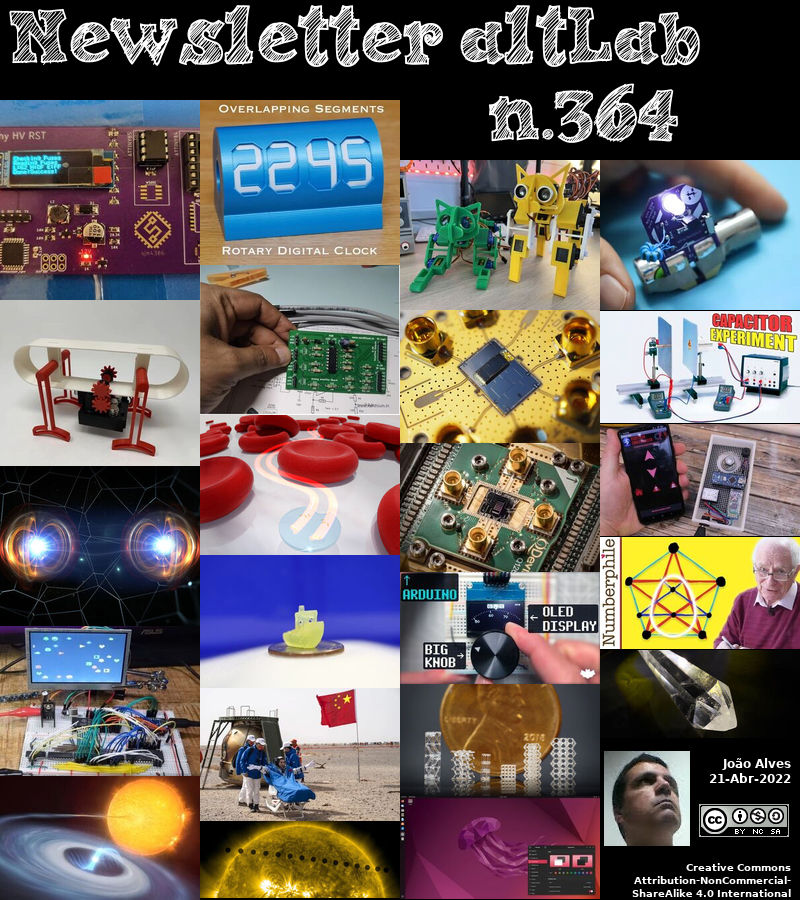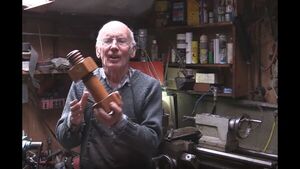2022-04-21 - Nº 364
Editorial
Esta é a Newsletter Nº 364 que se apresenta com o mesmo formato que as anteriores. Se gostar da Newsletter partilhe-a!
Todas as Newsletters encontram-se indexadas no link.
Esta Newsletter tem os seguintes tópicos:
Faz hoje anos que nascia, em 1774, o físico e matemático francês Jean-Baptiste Biot. Ele, com Felix Savart, desenvolveu a lei Biot-Savart, segundo a qual a intensidade do campo magnético produzido pelo fluxo de corrente através de um fio varia inversamente com a distância do fio. Ele trabalhou em astronomia, elasticidade, calor, óptica, electricidade e magnetismo. Na matemática pura, ele contribuiu para a geometria. Em 1804 fez uma subida de 13.000 pés (5-km) de balão de ar quente com Joseph Gay-Lussac para investigar a atmosfera. Em 1806, acompanhou François Arago a Espanha para completar ali os trabalhos anteriores para medir o arco do meridiano. Biot descobriu a actividade óptica em 1815, a capacidade de uma substância rodar o plano de polarização da luz, que lançou a base para a sacarimetria, uma técnica útil de análise de soluções açucaradas.
Faz também hoje anos que nascia, em 1830, o inventor e fabricante britânico James Starley. Ele ficou conhecido como o pai da indústria da bicicleta. Starley deixou a quinta familiar na adolescência e depois de ter trabalhado inicialmente como jardineiro, recorreu a interesses mecânicos. Melhorou a primeira máquina de costura, e por volta de 1861, estava no negócio com Josiah Turner como a Coventry Sewing Machine Company. Em poucos anos, a sua fábrica começou a produzir bicicletas. Em 1870, entrou no negócio por conta própria, produzindo as suas máquinas de costura Europa e as bicicletas Ariel, "penny-farthing" e triciclos. A Ariel, uma bicicleta leve totalmente metálica (1871), é considerada como a primeira bicicleta verdadeira, a primeira bicicleta de duas rodas auto-propulsionada a utilizar a direcção pivô-central. A sua roda de direcção tangente-tensão (1876) ainda é utilizada.
Faz igualmente hoje anos que nascia, em 1882, o físico experimental norte-americano Percy Williams Bridgman. Ele ficou conhecido pelos seus estudos de materiais a altas temperaturas e pressões. Foi galardoado com o Prémio Nobel da Física em 1946 pela sua "invenção de um aparelho para produzir pressões extremamente elevadas, e pelas descobertas que fez com ele no campo da física de alta pressão". Foi o primeiro físico de Harvard a receber um Prémio Nobel da Física. Em 1908, iniciou o seu primeiro trabalho experimental com pressões estáticas elevadas de cerca de 6.500 atmosferas. Eventualmente, ele atingiu cerca de 400.000 atmosferas. Durante os estudos das mudanças de fase dos sólidos sob pressão, ele descobriu várias formas de alta pressão de gelo. Bridgman também escreveu eloquentemente sobre assuntos de interesse geral na física da sua época.
Por fim, faz hoje anos que nascia, em 1951, o matemático norte-americano Michael Freedman. Ele recebeu a Medalha Fields em 1986 pela sua prova da conjectura em quatro dimensões (1982). A conjectura de Poincaré, um dos famosos problemas da matemática do século XX, afirma que um colector tridimensional fechado simplesmente ligado é uma esfera tridimensional. A conjectura dimensional superior de Poincaré afirma que qualquer n-manifold fechado que seja homotopia equivalente à n-esfera deve ser a n-esfera. Para valores de n pelo menos 5, foi dada uma solução por Smale em 1961. Duas décadas depois, a Freedman provou a conjectura para n = 4. No entanto, a conjectura original para n=3 permaneceu em aberto. Grigori Perelman deu uma prova completa em 2003.
E foi lançado hoje o Ubuntu 22.04 LTS. Com a designação de "Jammy Jellyfish" esta versão de Ubuntu é uma LTS, isto significa que irá ter 5 anos de suporte. De entre as novidades podemos destacar o Kernel Linux 5.15 LTS. Esta versão inclui alguns componentes do GNOME 42. O compilador de sistema é o GCC 11.2. Nos equipamentos suportados destaca-se os novos Raspberry PI Zero 2W e os Raspberry PI 4.
Também nesta semana que passou, três astronautas chineses regressaram à Terra depois de terem estado no espaço 183 dias. Os astronautas da missão Shenzhou-13 regressaram no passado dia 16, depois da missão mais longa feita por astronautas chineses. O Objectivo da China para este ano é de enviar para a estação espacial que está a construir - a Tiangong - dois módulos experimentais, duas naves tripuladas e duas naves de carga.
Na Newsletter desta semana apresentamos diversas noticias, artigos científicos, projetos de maker e alguns vídeos interessantes.
 João Alves ([email protected])
João Alves ([email protected])
O conteúdo da Newsletter encontra-se sob a licença  Creative Commons Attribution-NonCommercial-ShareAlike 4.0 International License.
Creative Commons Attribution-NonCommercial-ShareAlike 4.0 International License.
Novidades da Semana

Canonical Ubuntu 22.04 LTS is released
"Canonical Ubuntu 22.04 LTS is now generally available, featuring significant leaps forward in cloud confidential computing, real-time kernel for industrial applications, and enterprise Active Directory, PCI-DSS, HIPAA, FIPS and FedRAMP compliance – raising the bar for open source from cloud to edge, IoT and workstations. Canonical partners with industry leaders to deliver enterprise-grade security, long-term maintenance and support on all major architectures, hardware and clouds. “Our mission is to be a secure, reliable and consistent open-source platform – everywhere”, said Mark Shuttleworth, CEO of Canonical. “Ubuntu 22.04 LTS unlocks innovation for industries with demanding infrastructure security requirements, such as telecommunications and industrial automation, underpinning their digital transformation.“ Confidential Computing and Arm drive public cloud innovation Ubuntu is deeply integrated into public clouds and optimised for performance, security and ease of use. A key new capability is Confidential Computing, which greatly improves data protection and privacy in leading public clouds without requiring any changes to existing application deployments. Ubuntu is the only Linux distribution supporting Azure Confidential VMs." [...]

3 Chinese astronauts return to Earth after 6 months in space
"Three Chinese astronauts returned to Earth on Saturday after six months aboard their country's newest orbital station in the longest crewed mission to date for China's ambitious space program. The Shenzhou 13 space capsule landed in the Gobi desert in the northern region of Inner Mongolia, shown live on state TV. During the mission, astronaut Wang Yaping carried out the first spacewalk by a Chinese woman. Wang and crewmates Zhai Zhigang and Ye Guangfu beamed back physics lessons for high school students. China launched its first astronaut into space in 2003 and landed robot rovers on the moon in 2013 and on Mars last year. Officials have discussed a possible crewed mission to the moon." [...]
Outras Notícias

NASA’s Perseverance Rover Captures Video of Solar Eclipse on Mars
"The Mastcam-Z camera recorded video of Phobos, one of the Red Planet’s two moons, to study how its orbit is changing over time. NASA’s Perseverance Mars rover has captured dramatic footage of Phobos, Mars’ potato-shaped moon, crossing the face of the Sun. These observations can help scientists better understand the moon’s orbit and how its gravity pulls on the Martian surface, ultimately shaping the Red Planet’s crust and mantle. Captured with Perseverance’s next-generation Mastcam-Z camera on April 2, the 397th Martian day, or sol, of the mission, the eclipse lasted a little over 40 seconds – much shorter than a typical solar eclipse involving Earth’s Moon. (Phobos is about 157 times smaller than Earth’s Moon. Mars’ other moon, Deimos, is even smaller.)" [...]
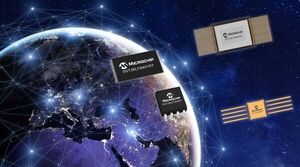
Serial 64-Mbit SuperFlash® Memory Extends Options for Designing Space Systems Using Radiation-Tolerant COTS-Based Devices
"The SST26LF064RT memory device is Microchip’s second SuperFlash technology-based offering to be space qualified. Designers of spaceflight-qualified systems have a great need to reduce development time, cost and risk in their systems. Microchip Technology Inc. (Nasdaq: MCHP) proposed the concept of starting with Commercial-Off-The-Shelf (COTS) devices and then replacing them with space-qualified, Radiation-Tolerant (RT) equivalent parts. Microchip today announces it has extended its family of COTS-based, RT SuperFlash® devices for these applications and is bringing the Microchip memory technology’s unrivaled 50 kilorad (krad) Total Ionizing Dose (TID) tolerance to a 64-Mbit serial quad I/O NOR flash memory device for use in harsh aerospace and defense system environments. “The SST26LF064RT SuperFlash device brings the best TID performance on the market to a 64-Mbit serial quad I/O memory solution that works alongside any SRAM-based FPGA in diverse space applications,” said Bob Vampola, associate vice president of Aerospace and Defense at Microchip. “It is ideal for systems used in Low Earth Orbit (LEO) space constellations and other harsh radiation environments where companion flash memory is required for storing the critical software code or bitstream that drives the complete system.” Microchip SuperFlash NOR flash memory products use a proprietary split-gate cell architecture to improve performance, data retention and reliability as compared to conventional stacked-gate flash." [...]

Kyocera develops transmissive metasurface technology that redirects wireless signals for improved 5G and 6G performance
"Kyocera Corporation (President: Hideo Tanimoto) has developed a Transmissive Metasurface technology that can redirect wireless network signals in a specific direction to improve the coverage area and performance of 5G and eventually 6G networks. The Transmissive Metasurface will help deliver high-frequency millimeter-wave 5G and 6G to places where communication is impossible due to obstacles, expanding service areas beyond the capability of conventional Reflective Metasurface technologies used today. The 28 GHz band used in 5G networks, and the higher frequency band being studied for 6G, have a high degree of rectilinear propagation. Signals often cannot reach locations where a direct line of sight to the base station is obstructed. Reflective Metasurface technology offers a very limited ability to change the direction of a signal to reach these areas. To solve this issue and expand performance, Kyocera developed a new Transmissive Metasurface technology that can redirect radio waves at smaller angles to extend targeted network coverage." [...]
Ciência e Tecnologia
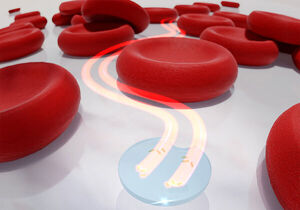
Microdrones With Light-driven Nanomotors
"Propelling micrometre-sized drones using light only and exerting precise control: Physicists at the University of Würzburg have succeeded at this for the first time. Their microdrones are significantly smaller than red blood cells. A hand-held laser pointer produces no noticeable recoil forces when it is "fired" - even though it emits a directed stream of light particles. The reason for this is its very large mass compared to the very small recoil impulses that the light particles cause when leaving the laser pointer. However, it has long been clear that optical recoil forces can indeed have a very large effect on correspondingly small particles. For example, the tails of comets point away from the Sun partly due to light pressure." [...]

Inspired by Prehistoric Creatures, NIST Researchers Make Record-Setting Lenses
"Drawing lessons from the compound eyes of trilobites, NIST researchers fabricate tiny lenses that see both near and far. Five hundred million years ago, the oceans teemed with trillions of trilobites — creatures that were distant cousins of horseshoe crabs. All trilobites had a wide range of vision, thanks to compound eyes — single eyes composed of tens to thousands of tiny independent units, each with their own cornea, lens and light-sensitive cells. But one group, Dalmanitina socialis, was exceptionally farsighted. Their bifocal eyes, each mounted on stalks and composed of two lenses that bent light at different angles, enabled these sea creatures to simultaneously view prey floating nearby as well as distant enemies approaching from more than a kilometer away. Inspired by the eyes of D. socialis, researchers at the National Institute of Standards and Technology (NIST) have developed a miniature camera featuring a bifocal lens with a record-setting depth of field — the distance over which the camera can produce sharp images in a single photo." [...]
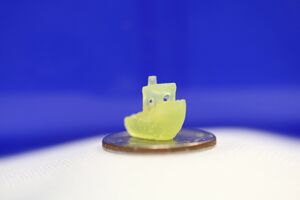
Stanford engineers develop new kind of 3D printing
"Engineers at Stanford and Harvard have laid the groundwork for a new system for 3D printing that doesn’t require that an object be printed from the bottom up. While 3D printing techniques have advanced significantly in the last decade, the technology continues to face a fundamental limitation: objects must be built up layer by layer. But what if they didn’t have to be? Dan Congreve, an assistant professor of electrical engineering at Stanford and former Rowland Fellow at the Rowland Institute at Harvard University, and his colleagues have developed a way to print 3D objects within a stationary volume of resin. The printed object is fully supported by the thick resin – imagine an action figure floating in the center of a block of Jell-O – so it can be added to from any angle. This removes the need for the support structures typically required for creating complex designs with more standard printing methods." [...]
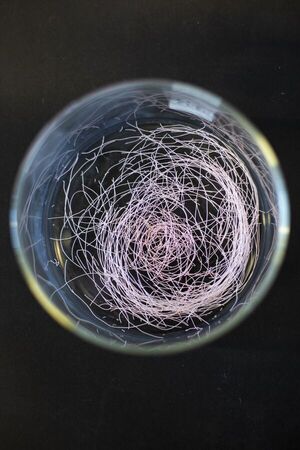
New promising nanogel separates chemicals continuously
"Nanomaterials scientists from Utrecht University have improved a nanogel in such a way that it can now transport individual molecules from one liquid to the other. “By enlarging the surface area between two liquids, we can increase the exchange of chemicals. This technique can make industrial processes more energy efficient and open possibilities to make better solar cells.” The researchers’ paper was recently published by the scientific magazine Advanced Materials. Physical Chemist Martin Haase and his research group work on techniques to make so-called bijels: emulsions of two liquids that do not mix, like oil and water, separated by an ultra-thin layer of nanoparticles that stabilizes the surface between the fluids. “In such gel-like materials, two repellent liquids are interwoven”, Haase explains. “At the interface of the two, molecules can move from one liquid to the other through the nanolayer.” The gels work best if the interface between the two liquids has a large surface." [...]
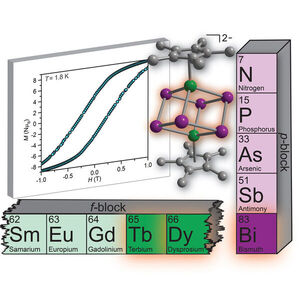
Spartan researchers create a magnet made of one molecule
"Scientists use ‘impressive’ chemistry that opens new doors for hard drives and other cutting-edge technology Sometimes making a brand-new type of box requires outside-the-box thinking, which is exactly what Spartan chemists used to create an eight-atom, magnetic cube. That tiny box is at the heart of a new magnetic molecule that could power future technologies for data storage, quantum computing and more. “In the beginning, our approach seemed like a really wild idea,” said Selvan Demir, an assistant professor of chemistry in the College of Natural Science. “But, it turns out it works.” Demir and her team published their work in the journal Chem, which featured the research on the cover of its March 10 issue. Part of what made the researchers’ idea so wild was their choice to work with starting ingredients that are notoriously finicky in the chemistry community. One ingredient is a group of elements referred to as lanthanides, which occupy a special row toward the bottom of the periodic table of elements." [...]

Jülich Quantum Researchers Build First Hybrid Quantum Bit Based on Topological Insulators
"Scientists at Forschungszentrum Jülich take an important step on the path towards topological quantum computers With their superior properties, topological qubits could help achieve a breakthrough in the development of a quantum computer designed for universal applications. So far, no one has yet succeeded in unambiguously demonstrating a quantum bit, or qubit for short, of this kind in a lab. However, scientists from Forschungszentrum Jülich have now gone some way to making this a reality. For the first time, they succeeded in integrating a topological insulator into a conventional superconducting qubit. Just in time for "World Quantum Day" on 14 April, their novel hybrid qubit made it to the cover of the latest issue of the renowned journal Nano Letters. Quantum computers are regarded as the computers of the future." [...]
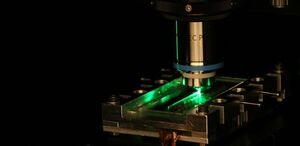
Sapphire fibre could enable cleaner energy and air-travel
"Oxford University researchers have developed a sensor made of sapphire fibre that can tolerate extreme temperatures, with the potential to enable significant improvements in efficiency and emission reduction in aerospace and power generation. The work, published in the journal Optics Express, uses a sapphire optical fibre – a thread of industrially grown sapphire less than half a millimetre thick – which can withstand temperatures over 2000°C. When light is injected onto one end of the sapphire fibre, some is reflected back from a point along the fibre which has been modified to be sensitive to temperature (known as a Bragg grating). The wavelength (colour) of this reflected light is a measure of the temperature at that point. The research resolves a 20-year-old problem with existing sensors that, whilst the sapphire fibre seems very thin, in comparison to the wavelength of light it is huge. This means that the light can take many different paths along the sapphire fibre, which results in many different wavelengths being reflected at once." [...]
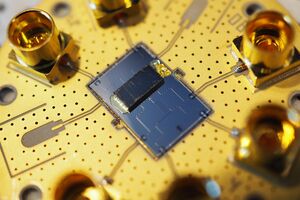
New hardware created by Stanford team shows a way to develop delicate quantum technologies based on tiny mechanical devices
"By bringing the benefits of mechanical devices into the quantum realm, Stanford researchers aim to create advanced computing and sensing devices. Stanford University researchers have developed a key experimental device for future quantum physics-based technologies that borrows a page from current, everyday mechanical devices. Reliable, compact, durable, and efficient, acoustic devices harness mechanical motion to perform useful tasks. A prime example of such a device is the mechanical oscillator. When displaced by a force – like sound, for instance – components of the device begin moving back-and-forth about their original position. Creating this periodic motion is a handy way to keep time, filter signals, and sense motion in ubiquitous electronics, including phones, computers, and watches." [...]

New materials for storing flammable industrial gases
"An international research team involving the CNRS, Air Liquide and the University of Kyoto (Japan) has just demonstrated the very promising capabilities of a new family of materials for storing flammable gases such as acetylene. These materials are nanoporous and flexible and can be modified to improve the adsorption of small molecules at the temperature and pressure conditions required for industrial applications. These results were published on 21 April 2022 in Nature Chemistry. How do I store more, and better? This summarizes the challenge of transporting flammable gases. To ensure industrial safety, these gases must be handled at defined temperature and pressure conditions that do not allow for optimal storage and release cycles." [...]
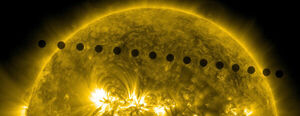
Why Venus rotates, slowly, despite sun’s powerful grip
"If not for the soupy, fast-moving atmosphere on Venus, Earth’s sister planet would likely not rotate. Instead, Venus would be locked in place, always facing the sun the way the same side of the moon always faces Earth. The gravity of a large object in space can keep a smaller object from spinning, a phenomenon called tidal locking. Because it prevents this locking, a UC Riverside scientist argues the atmosphere needs to be a more prominent factor in studies of Venus as well as other planets. These arguments, as well as descriptions of Venus as a partially tidally locked planet, were published today in a Nature Astronomy article. “We think of the atmosphere as a thin, almost separate layer on top of a planet that has minimal interaction with the solid planet,” said Stephen Kane, UCR astrophysicist and lead paper author." [...]
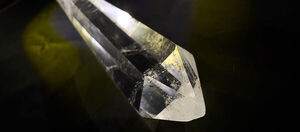
Revolutionary images of the birth of crystals
"A team from the UNIGE has succeeded in visualizing crystal nucleation - the stage that precedes crystallization - that was invisible until now. At the interface between chemistry and physics, the process of crystallization is omnipresent in nature and industry. It is the basis for the formation of snowflakes but also of certain active ingredients used in pharmacology. For the phenomenon to occur for a given substance, it must first go through a stage so-called nucleation, during which the molecules organize themselves and create the optimal conditions for the formation of crystals. While it has been difficult to observe this pre-nucleation dynamics, this key process has now been revealed by the work of a research team from the University of Geneva (UNIGE). The scientists have succeeded in visualizing this process spectroscopically in real time and on a micrometric scale, paving the way to the design of safer and more stable active substances." [...]

Astronomers discover micronovae, a new kind of stellar explosion
"A team of astronomers, including the UvA's Nathalie Degenaar have observed a new type of stellar explosion — a micronova, with the help of the European Southern Observatory’s Very Large Telescope (ESO’s VLT). These outbursts happen on the surface of certain stars, and can each burn through around 3.5 billion Great Pyramids of Giza of stellar material in only a few hours. 'We have discovered and identified for the first time what we are calling a micronova,' explains Simone Scaringi, an astronomer at Durham University in the UK who led the study on these explosions published today in Nature. 'The phenomenon challenges our understanding of how thermonuclear explosions in stars occur. We thought we knew this, but this discovery proposes a totally new way to achieve them,' he adds. Micronovae are extremely powerful events, but are small on astronomical scales; they are much less energetic than the stellar explosions known as novae, which astronomers have known about for centuries." [...]

Spooky action at a distance? Not a chance!
"Quantum mechanics has a way of taking your mind to places it just doesn’t want to go. Famously hard to understand and impossible to intuit, concepts such as quantum entanglement and superposition really make sense only when viewed through a mathematical lens. Plain language most often leads you down dead ends or false paths that end miles away from reality, with carelessly chosen words propagating misunderstandings at the speed of the internet. A well-known case in point comes from Albert Einstein. The baked-in weirdness of quantum mechanics troubled him, leading to two celebrated quotes. One — “God does not play dice with the universe”— expressed his unease about the reign of probability over certainty in the quantum realm." [...]
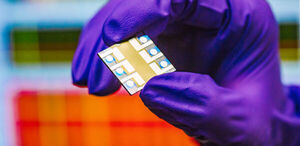
Illuminating perovskite photophysics
"Light causes small rapid distortions in solar cell material, affecting how charge carriers behave. A detailed view of how electrical charges behave inside perovskites could guide efforts to improve the performance of next-generation solar cells based on these materials, KAUST research has shown. When light hits a perovskite, it excites negatively charged electrons and leaves behind positively-charged “holes” within the material’s crystalline structure. These electrons and holes can then move through the perovskite to generate an electrical current. But the charge carriers could also recombine instead, which wastes the energy they carry. “The efficiency of perovskite solar cells has been greatly improved in the past decade, but fundamental research on their photophysics is relatively backward,” says Ming-Cong Wang at the KAUST Solar Center, part of the team behind the work." [...]
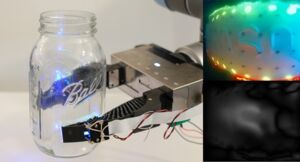
A flexible way to grab items with feeling
"MIT engineers Edward Adelson and Sandra Liu duo develop a robotic gripper with rich sensory capabilities. The notion of a large metallic robot that speaks in monotone and moves in lumbering, deliberate steps is somewhat hard to shake. But practitioners in the field of soft robotics have an entirely different image in mind — autonomous devices composed of compliant parts that are gentle to the touch, more closely resembling human fingers than R2-D2 or Robby the Robot. That model is now being pursued by Professor Edward Adelson and his Perceptual Science Group at MIT’s Computer Science and Artificial Intelligence Laboratory (CSAIL). In a recent project, Adelson and Sandra Liu — a mechanical engineering PhD student at CSAIL — have developed a robotic gripper using novel “GelSight Fin Ray” fingers that, like the human hand, is supple enough to manipulate objects. What sets this work apart from other efforts in the field is that Liu and Adelson have endowed their gripper with touch sensors that can meet or exceed the sensitivity of human skin." [...]
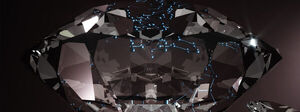
New hub to make diamond-based quantum computers
"A joint research and development hub will harness the strength of synthetic diamonds to build a new generation of quantum computers. The newly established Research Hub for Diamond Quantum Materials is led by German-Australian quantum computing provider Quantum Brilliance, with RMIT and La Trobe universities as major research partners. All three organizations have world-leading expertise and resources in diamond material sciences. Their work uses the impurities within diamonds – where a carbon atom is swapped out for a nitrogen atom within the crystal – to generate qubits, the standard bits within a quantum computer. The resulting microprocessor is in turn protected by its diamond casing. Inside it, fragile quantum states that can normally only survive in a vacuum or at ultra-cold temperatures can interact at room temperature and enable quantum computing." [...]
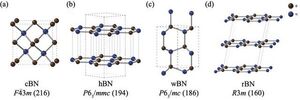
Predicting the Most Stable Boron Nitride Structure with Quantum Simulations
"Researchers settle the debate on the relative stabilities of boron nitride's structures using a state-of-the-art quantum simulation method Despite the huge technological interest in boron nitride (BN), understanding the relative stability of its different structural phases remains a challenge owing to conflicting results from experiments and simulations. In a new study, an international research team addresses this issue with state-of-the-art quantum Monte Carlo simulation technique, demonstrating the most stable BN structure. This accurate and reliable method could lay the groundwork for future breakthroughs in the field of materials science. Boron nitride (BN) is a versatile material with applications in a variety of engineering and scientific fields. This is largely due to an interesting property of BN called "polymorphism," characterized by the ability to crystallize into more than one type of structure. This generally occurs as a response to changes in temperature, pressure, or both." [...]

Lithium’s narrow paths limit batteries
"Rice study suggests stress among misaligned particles in typical cathodes limits flow If you could shrink enough for a fantastic voyage across a lithium battery electrode, you’d see the level of charge at every scale is highly uneven. This is not good for the battery’s health. Rice University researchers who recognize the problem worked with the Department of Energy to view in great detail how the various particles in an electrode interact with lithium during use. Specifically, the Rice lab of materials scientist Ming Tang analyzed nano- and micro-scale interactions within lithium iron phosphate cathodes through modeling and imaging offered by the transmission X-ray microscopy capabilities at Brookhaven National Laboratory and Argonne National Laboratory. Their paper in the American Chemical Society journal ACS Energy Letters supports theories Tang and his colleagues formed several years ago that foresaw how lithium travels in the dynamic environment inside a typical commercial cathode. Being able to watch sealed cathodes charge and discharge at Brookhaven offered absolute proof." [...]
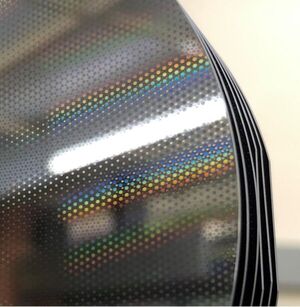
MIT scientists develop low-cost, high-precision fabrication method for thin mirrors and silicon wafers
"A novel photolithography technique could be a manufacturing game-changer for optical applications. Technologies that depend on lightweight, high-precision optical systems, like space telescopes, X-ray mirrors, and display panels, have developed significantly over the past several decades, but more advanced progress has been limited by seemingly simple challenges. For example, the surfaces of mirrors and plates with microstructures that are necessary in these optical systems can be distorted by stressed surface coating materials, degrading optics quality. This is especially true for ultra-lightweight optical systems, such as space optics, where traditional optical fabrication methods struggle to meet exacting shape requirements. Now, MIT researchers Youwei Yao, Ralf Heilmann, and Mark Schattenburg of the Space Nanotechnology Laboratory (SNL) within MIT’s Kavli Institute for Astrophysics and Space Research, as well as recent graduate Brandon Chalifoux PhD ’19, have devised new methods to work past this barrier. In a paper appearing in the April 20 issue of Optica, Yao, a research scientist and the paper’s lead author, explains their new approach to reshaping thin plate materials in a way that eliminates distortion and enables researchers to bend surfaces more arbitrarily into the precise and complex shapes they might need." [...]

Researchers Demonstrate Label-Free Super-Resolution Microscopy
"Imaging method measures particle size and position with nanometer precision Researchers have developed a new measurement and imaging approach that can resolve nanostructures smaller than the diffraction limit of light without requiring any dyes or labels. The work represents an important advance toward a new and powerful microscopy method that could one day be used to see the fine features of complex samples beyond what is possible with conventional microscopes and techniques. The new method, described in Optica, Optica Publishing Group’s journal for high-impact research, is a modification of laser scanning microscopy, which uses a strongly focused laser beam to illuminate a sample. The researchers expanded on the technique by measuring not only the brightness, or intensity, of the light after it interacts with a specimen under study, but also detecting other parameters encoded in the light field. “Our approach could help extend the microscopy toolbox used to study nanostructures in a variety of samples,” said research team leader Peter Banzer from the University of Graz in Austria. “In comparison to super-resolution techniques based on a similar scanning approach, our method is fully non-invasive, meaning it doesn’t require any fluorescent molecules to be injected into a specimen before imaging.” The researchers show that they can measure the position and sizes of gold nanoparticles with an accuracy of several nanometers, even when multiple particles were touching." [...]

What lies beneath
"In a new book, an MIT scholar examines how game-theory logic underpins many of our seemingly odd and irrational decisions. Why do people wear Rolex watches or drive Bentleys, when less expensive goods can perform better? Why does anyone fight the crowds at the Louvre to see the “Mona Lisa” for 30 seconds, when they could view it online for hours? Well, they may be engaging in “costly signaling,” in which people display their wealth to seem desirable, even if it costs money to show they have money. And it’s not only people who use costly signaling: Male peacocks grow longer tails to be more attractive to females, at the cost of being easier to catch by predators. Meanwhile, other folks play it cool." [...]
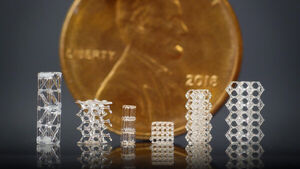
Researchers develop innovative 3D-printing technology for glass microstructures
"Researchers at UC Berkeley have developed a new way to 3D-print glass microstructures that is faster and produces objects with higher optical quality, design flexibility and strength, according to a new study published in the April 15 issue of Science. Working with scientists from the Albert Ludwig University of Freiburg, Germany, the researchers expanded the capabilities of a 3D-printing process they developed three years ago — computed axial lithography (CAL) — to print much finer features and to print in glass. They dubbed this new system “micro-CAL.” Glass is the preferred material for creating complex microscopic objects, including lenses in compact, high-quality cameras used in smartphones and endoscopes, as well as microfluidic devices used to analyze or process minute amounts of liquid. But current manufacturing methods can be slow, expensive and limited in their ability to meet industry’s increasing demands. The CAL process is fundamentally different from today’s industrial 3D-printing manufacturing processes, which build up objects from thin layers of material. This technique can be time-intensive and result in rough surface texture." [...]
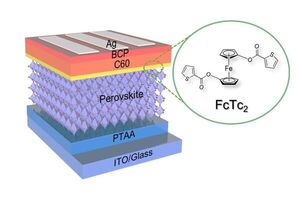
Cheaper solar cells could be on the way thanks to materials created at Imperial
"New solar cell devices that are cheaper and easier to make could soon make their way to market thanks to materials made at Imperial College London. Traditional solar cells are made from silicon, which has good efficiency and stability, but is relatively expensive to make and can only be manufactured in stiff panels. Perovskite solar cells offer an intriguing alternative; they can be printed from inks, making them low cost, high efficiency, thin, lightweight and flexible. However, they have trailed behind silicon solar cells in efficiency and, importantly, stability, breaking down under normal environmental conditions. New metal-containing materials called ferrocenes could help with these problems. Researchers from City University of Hong Kong (CityU) have added Imperial-made ferrocenes into perovskite solar cells, vastly improving their efficiency and stability." [...]
Projetos Maker
Diversos Projetos interessantes.
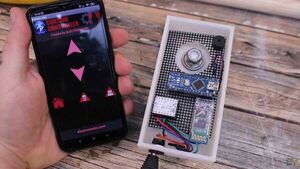
Bluetooth Curtain
"For some time, I had that a green background curtain in my workshop. I sometimes use it when I want to change the background of my videos, because is very easy to use that effect. As I had it till now is very ugly because it stands there in the corner. For now I was using it on some sliding rollers and when I don’t use it, I put it on the side. That’s ugly and it messes up the curtain. That’s why today I will go from that system to an automatic motorized curtain with rollers that will go up and down and can be controlled with my smartphone." [...]
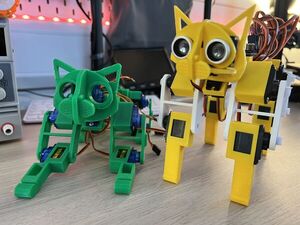
PicoCat v2
"PicoCat is a remix of Opencat, created by Dr. Rongzhong Li in his dorm room back in 2016. Rongzhong went on to create Bittle, Nybble and the company Petio. PicoCat is different because its powered by the Raspberry Pi RP2040 chip, either in the Pico form or new Pimoroni Servo 2040 board. What is PicoCat? PicoCat is a 3d printable, opensource Cat robot, programmed using MicroPython. Upgrades Body The first upgrade is the new body, which is designed to accomodate the Servo 2040 board, which is a tiny bit wider than the original body." [...]

Melting KiCad
"KiCad has improved a lot, but one of the features it's really lacking is the ability to do smooth, rounded traces with teardrops (fillets on pads and vias). A lot of early, hand drawn PCBs had this look, where every connection is smooth and slightly melted. When people first switched to using computers to design circuit boards, the routing options were very limited and traces were forced to have sharp corners. Some people forget that our tendency to restrict traces to 45° angles is mainly a holdover from before there were any other options. Some of the benefits of teardrops and smooth traces are controversial, but the following can generally be agreed upon: - Smooth corners are potentially less prone to errors in the etching process - In the case of drill/pad misalignment, teardrops reduce the chance of a breakout - For flexible PCBs, sharp corners are stress concentrators, so removing them reduces the chance of cracking - Denser routing is possible when arbitrary angles are permitted - There may be some electromagnetic compliance (EMC) benefits, since sharp transitions represent a sudden change in impedance That last point is the one people tend to dwell on. It's been shown that at sub-GHz frequencies, the difference is negligible." [...]

Calculating Pi digits on first Intel microprocessor (intel 4004)
"Introduction One day I thought about the performance gap between the first Intel processor and modern machines. Of course, we can try to do some estimations empirically – we know clock rate and how the pipeline is organized and what features intel 4004 CPU has (but it would not be standard FLOPS, because there was no embedded support for float numbers yet). But there are few details: architecture bit width (only 4 bits in comparison with modern 64 bits! ), very limited instruction set (it’s missing even basic logical operators like AND or XOR) and peripheral limitations (ROM/RAM accesses). So I decided to research the subject in practice. After some thinking, I chose π number calculation as a benchmark." [...]

Arduino Library for the TMS9918 Video Dislplay Processor
"The TMS9918 from Texas Instruments and its derivatives were widely used video chips in the 1980s. So they were built into many popular home computers and game consoles of the time, such as the ColecoVision, CreatiVision, Memotech MTX, MSX, SG-1000/SC-3000, Spectravideo, Sord M5, Tatung Einstein, Texas Instruments TI-99/4, Casio PV-2000, and Tomy Tutor. The original TMS9918/9918A outputs NTSC composite video, but there is also a variant for PAL (TMS9928/TMS9928A). All these variants are referred to as Video Display Processor (VDP). The VDP has its own video RAM, which is separate from the system RAM. It was originally intended for use with 4116 DRAM chips, but these are rare nowadays and also require three different supply voltages, making them more cumbersome to handle." [...]
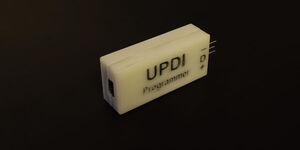
DIY UPDI USB programmer which can be made with cheap hardware
"If you are interested in DIY electronics, at one point in life you might encounter an Atmel MCU with an UPDI programming interface. The original programmer costs quite a lot, so most obvious solution would be to make one by yourself. So, in this post you will find out what parts and software you will need to make a DIY UPDI USB programmer. " [...]
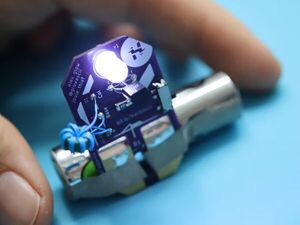
Joule Thief PCB: Power from "dead" batteries!
"Build a small circuit from salvaged components, to make an LED shine brightly from low-voltage sources. I feel a special connection to this circuit – whether you call it the "One-Volt LED" (named by Z. Kaparnik in 1999), or the "Vampire Micro Torch" or "Joule Thief" (designed in 2002 by Big Clive). The essence of this popular circuit comes from Kaparnik's article in Everyday Practical Electronics, which included schematics for a "Bright Light" that will power LEDs for ages, pulling the leftover energy out of a nearly-dead 1.2V or 1.5V battery. It's a truly magical little circuit, and versatile enough to work with a broad range of odd NPN transistors, salvaged ferrite cores, and "unusable" batteries. Sustainability heaven! The circuit OK, OK... it's really not ALL that mysterious." [...]

SHROOM From Super Mario
"Hey what's up guys, this is the SHROOM PCB Badge that is themed after SHROOM from Super Mario. This wearable Badge is made completely from PCB I got from PCBWAY and is powered by an Attiny85 which is in the SOIC8 Package. I added three WS2812B LEDs to this badge which are visible from the front side of the board. These LEDs are placed in an inverted position so their glow will be visible from the front side through the soldermask opening I left in both layers. This Instructables is gonna be about how I made this project so without further ado let's get started! " [...]
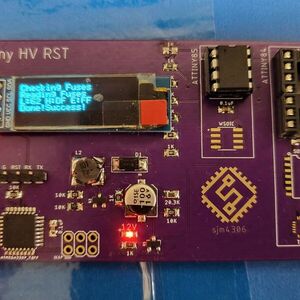
Attiny High Voltage Fuse Reset-er
"I've started playing around with the Attiny series of chips but want a way to recover them in case of bad fuse settings The last few projects I've started using Attiny chips where an Atmega would be overkill. So as I start to mess with fuse settings I thought it would be a good idea to design a little standalone high voltage programmer to be able to reset bricked chips. " [...]

Wacky Walker
"Perhaps the most convoluted walking mechanism I've ever seen, "Wacky Walker" was a lot of fun to design, 3D print, assemble, test, and, most important, watch in action! The inspiration for this model came from JK Brickworks Lego reproduction of a late 1980s toy known as "BearMobill" (yes, me neither). The model incorporates a motorized chassis hanging from an oval track having free rotating legs. When the chassis passes beyond the front pair of legs, it's weight is tuned just enough to flip the oval track over bringing the previously rear legs to the front to repeat the process. Designed using Autodesk Fusion 360, sliced using Ultimaker Cura 4.12.1, and 3D printed in PLA on Ultimaker S5s. I acquired the following parts: - One N20 30RPM 6VDC gear motor." [...]

Electric Vehicle EV Charger
"I built my own 7.2kW EV charger and fitted it inside a Zappi enclosure. The 2 aims were simplicity and safety. This article documents the build. I wrote the Arduino software for it and all design files, software and part lists are available on the GitHub page. Introduction EV chargers use a simple “pilot” signal to detect when they are plugged into a car and to tell the car how much current it is allowed to draw from the charger. They don’t modify the mains at all, they just switch it on/off to the car via some relays." [...]

Overlapping Segments Rotary Digital Clock
"Darrell Aldrich's smart ideaof overlapping segments digital clock, https://www.youtube.com/watch?v=Ol5JYbCdf2A is used to make the digits relatively larger than formerRotary Digital Clock. Instead of painting segments, printed part is just sticked to the rotor. Necessary parts - ESP32 based micro computer - 28BYJ-48 geared stepper motor and driver circuit comes with - Several 2x8mm tapping screws - Wire, soldering iron, lubricants such as silicone oil - Double sided adhesive tapes or superglue" [...]
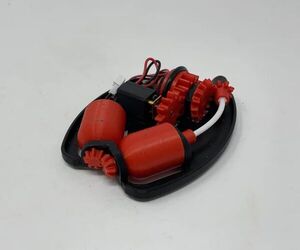
Crayon Car Mechanism.
"A few weeks ago, a video appeared in my recommended video feed from Tim at GrandIllusions (https://www.youtube.com/c/grandillusions) showing a crayon line following toy car designed forty years ago that had no electronics whatsoever, but no operational details were provided (Tim was perplexed regarding how the car operated). Not long after that, John at RobotHut (https://www.youtube.com/user/Robothut) sent me a link to a video of a design he created of a three motor version of the crayon following car. Between the two videos, and always loving to design, 3D print and assemble mechanisms, I designed this single motor crayon following car using a flexible 3D printed TPU axle to transfer rotary motion from the rear wheel to the front wheels. The theory behind the design is elegantly simple. A single rear wheel drives the car forward while the counter rotating front wheels "sense" the crayon line. When the counter rotating front wheels come in contact with the sticky wax crayon line, they are designed to steer the car away from the line." [...]
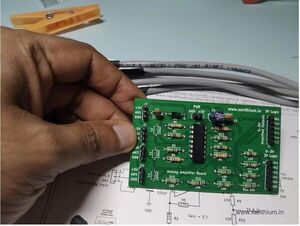
Building LM35 4 Channel Amplifier Board
"In this article,I will explain how to assemble the 4 channel LM35 amplifer board we made. This instructable requires that the user is comfortable operating and using a soldering iron. Reading resistor Colour codes or using a multimeter to find out the resistor Supplies: - 100nF Ceramic Disc Capacitor - 10uF/16V Electrolytic Capacitor - 1N5819 Diode - 10K Resistor - 27K Resistor - LM324A DIP-14 - PCB - LM35 - Shielded Wire - Heat shrink tubing - Soldering Iron" [...]
Secção Videos
Videos interessantes.
That's all Folks!



